Football Manager 21: Guide To Creating Classic 442 Tactics
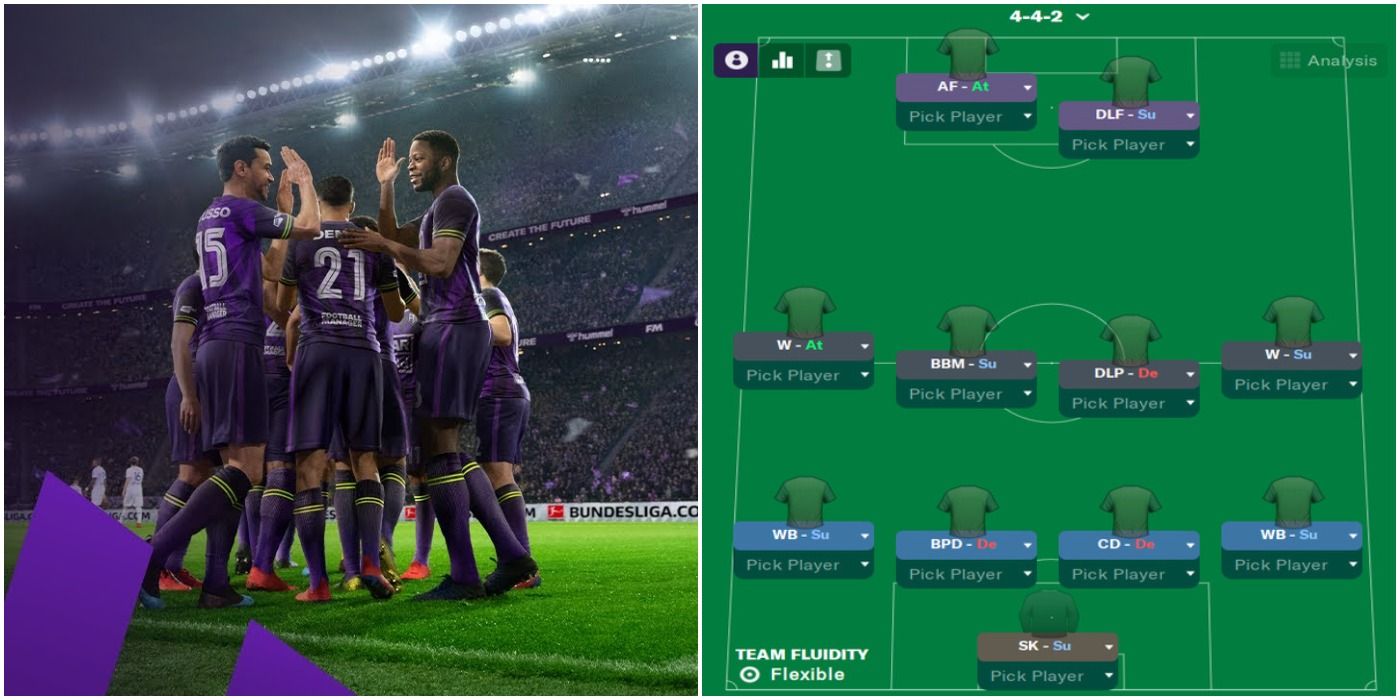
For many decades, 442 was a prevalent formation that many teams built their squad around, particularly in England. The shape then went out of style shortly after José Mourinho first came to Chelsea and won the league with his 433 style, which was uncommon in the Premier League at the time. However, the formation has come back into style in recent years, with Diego Simeone being a notable user of the system throughout the last few seasons.
There are, of course, numerous ways to implement a 442 formation in Football Manager 21. This list will look at two separate styles, an offensive wing play system and a more defensive counter-attacking one. It's important to note that the below information should be used as a general guide rather than something to copy, as managers should be flexible to make alterations depending on their squad and opponent.
8 Shape 1 - Wing Play (Offensive)

As the name suggests, the wing play system is designed to predominantly attack down the flanks, with wingers and wing backs pushing up the pitch when in possession. The system was commonly used by Sir Alex Ferguson's Manchester United team, who would blow teams away with their pace and/or crossing abilities from the wide areas thanks to players like Ronaldo, Giggs, Beckham, Neville, and Evra.
Due to the lack of central players, it's recommended to have at least one striker have a support role to drop back into more of a number 10 position when required. The above image features a Deep-Lying Forward with a support role, though there are also numerous other options to pick, such as Target Man or Pressing Forward. As mentioned before, the best role to pick depends on the strengths and weaknesses of the squad and upcoming opposition.
The mentality has been set to Balanced in the above image, though it may be worth changing to Positive or even Attacking when confident about the team's chances.
7 In Possession - Wing Play
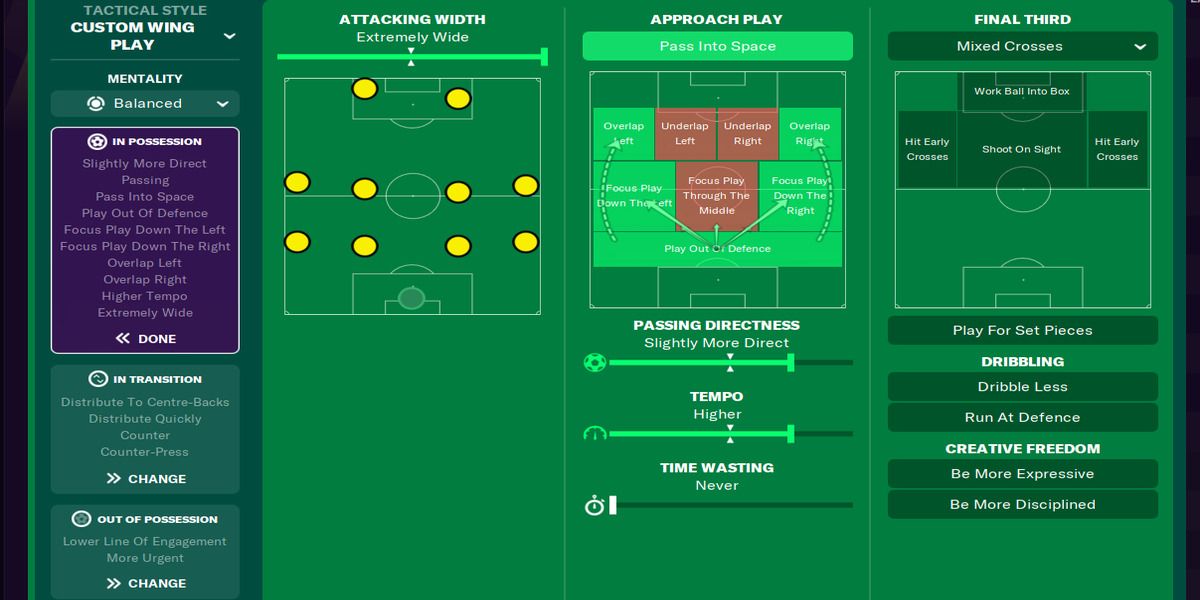
To hit home the wing play style, playing with Extremely Wide width and instructing players to focus play down the sides is important. Instructing wing-backs to overlap is also key to wing play, as otherwise, the wingers will be left isolated and can be easily double teamed by the opposition. The team has also been instructed to play out of defensive, though this should only be utilized if skilled ball-playing center backs are playing to avoid dangerous turnovers.
The Final Third section has been left blank as it's very dependent on the squad's abilities. Hit Early Crosses is often a good choice for a wing play style, though the crossing style should be frequently changed to suit the strikers arriving in the box. Creative Freedom is another section that should be changed to suit the team's needs. Ideally, managers will want to play with a Be More Expressive style, though this should only be used when very confident in the players' abilities; otherwise, there will be constant turnovers in possession.
6 In Transition - Wing Play
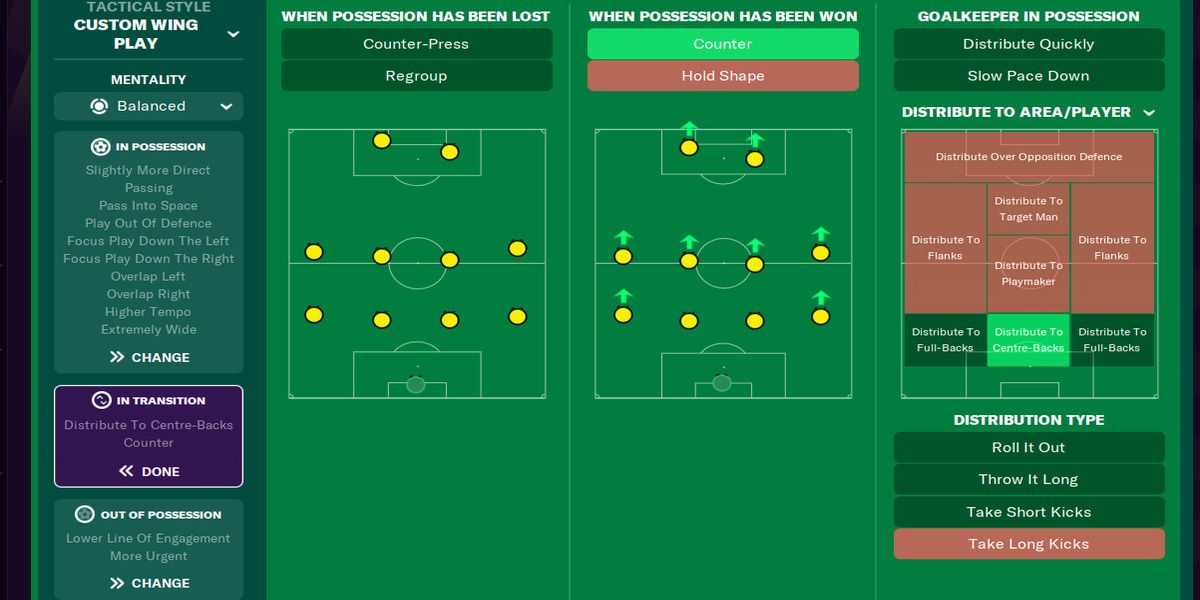
When Possession Has Been Lost has been left blank, though this is intentional rather than just a placeholder. In keeping with this style's offensive ideology, Regroup is too defensive as it will put most players behind the ball, making it difficult to attack effectively. This may make Counter-Press seem like a natural alternative, though this is extremely risky when playing with a 442, as a good team could beat the press with a few passes and exploit the lack of players in the central midfield.
Counter is a great option to pick for When Possession Has Been Won, as the two strikers paired with the two wingers can be devastating on the counter-attack when the opposition is exposed.
Distribute To Centre-Backs has been selected in keeping with this model's style, though much like the previous Play Out Of Defense instruction, it should be de-selected if the players aren't up for the task.
5 Out of Possession - Wing Play
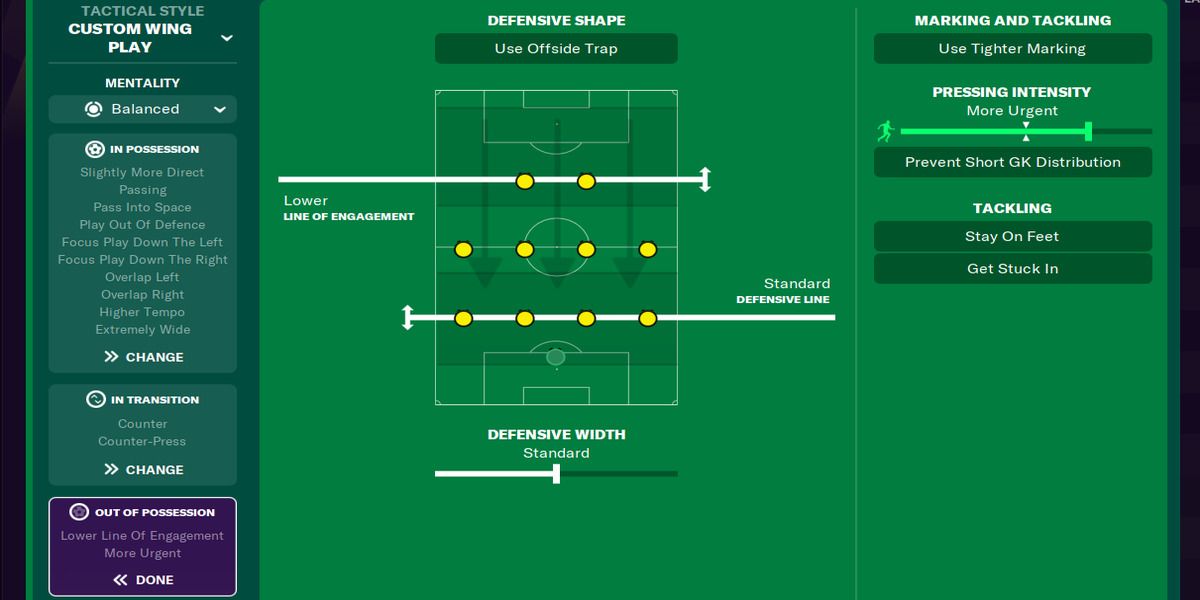
The above shape may look fairly defensive for a style that is intending to be offensive, but it's necessary to avoid overloads in midfield. The Line Of Engagement has been lowered to be more compact with the defensive line to ensure that the strikers will fall back to create a more compact unit. The reason for this is to give the side more defensive stability in the center of the pitch, an area that is potentially weak due to the 442 formation only putting two players in center midfield.
4 Shape 2 - Counter Attack (Defensive)
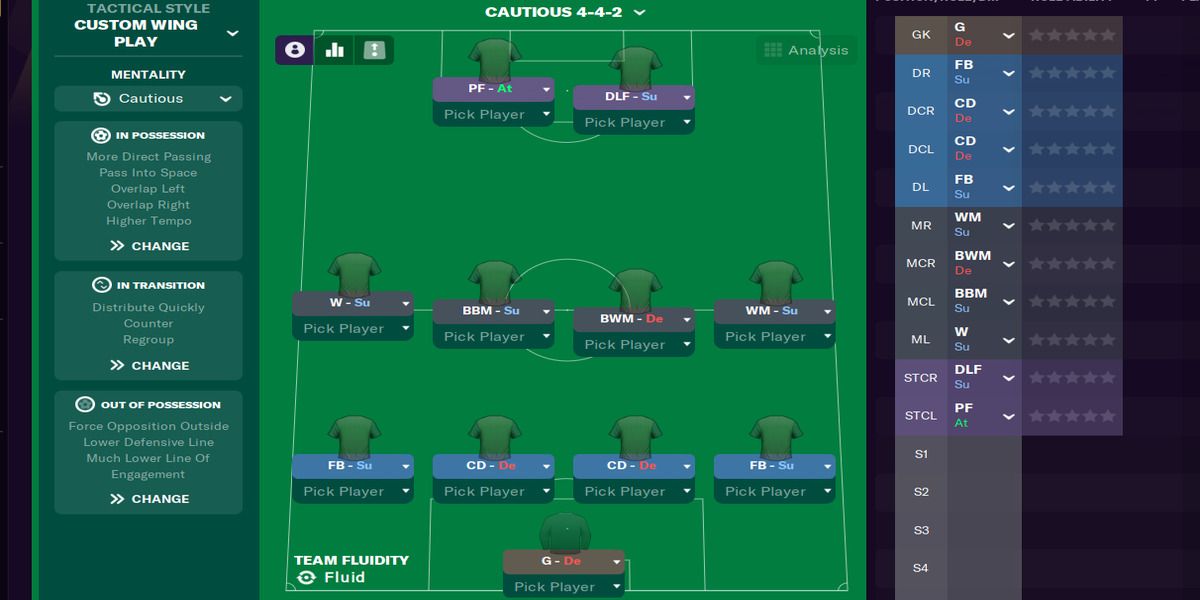
For the more defensive iteration of the 442, it's worth having one of the wingers set to Wide Midfielder to provide more solidity in central midfield. To enhance this idea, it's possible to instruct the player to sit more narrow, which will ensure that they frequently tuck inside to create more of a central midfield three when required.
The Deep Lying Forward has remained in this style, but the other striker has been switched to a Pressing Forward to ensure that they offer more defensive help.
The Mentality has been set to Cautious, as this counter-attacking style is designed for playing against a strong opposition team that is favorite to win the match.
3 In Possession - Counter Attack
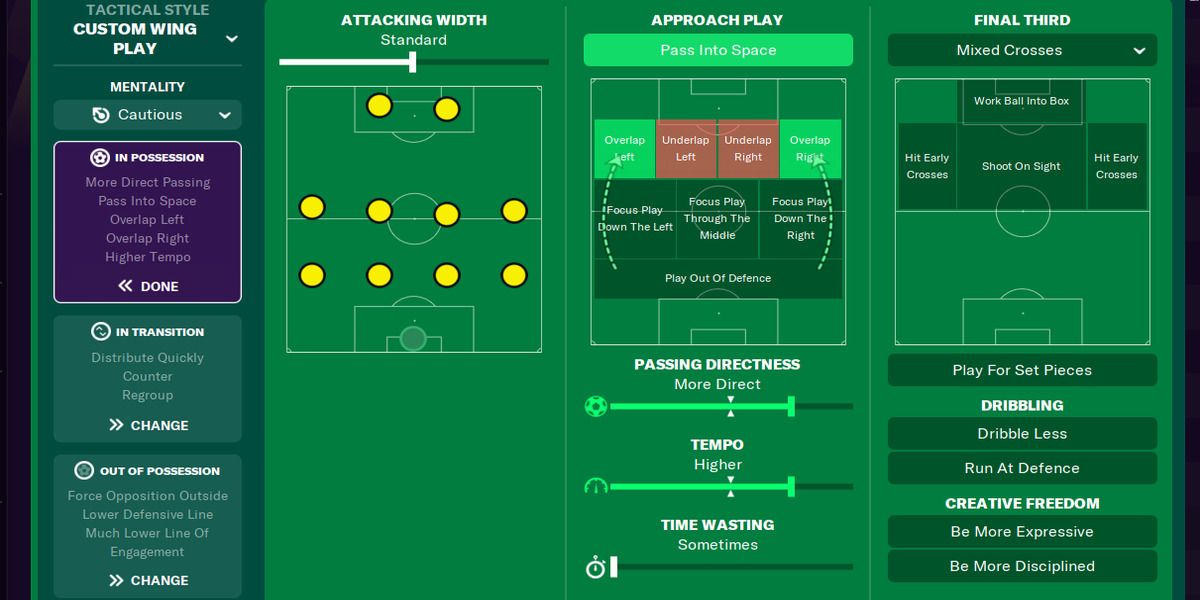
The most notable change in this style is the significant difference in width. The reason for this is that a defensive-minded team needs to be wary of counter-attacks from the opposition. If the Attacking Width was set to Extremely Wide like in the aforementioned wing play style, then the team will be extremely vulnerable when losing the ball, with a lack of cover in the center of the pitch that the opposition could expose on the counter.
Play Out Of Defensive is another tactic that has been changed. This is because it's a significant risk to try and pass the ball around the defensive when playing against a strong opposition who will likely be hunting the defenders like sharks.
2 In Transition - Counter Attack
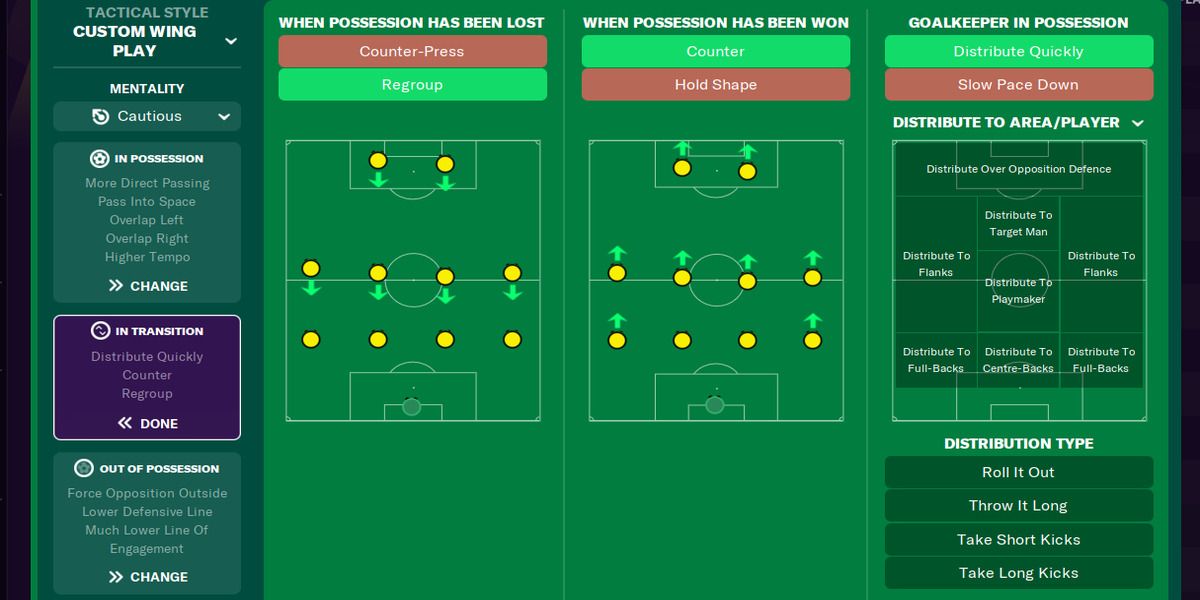
Unsurprisingly, the Counter tactic is an essential pick when playing with a counter-attacking style. Distribute Quickly is also a solid option, as a keeper with good distribution could start the counter-attack with a well-placed throw or kick.
Distribute To Area/Player, and Distribution Type have been left blank as they're very dependent on the team's players. Distribute Over Opposition Defensive is a great option if suitable, as a quality pass from the keeper to a pacey striker can be a devastating way to counter-attack.
1 Out of Possession - Counter Attack

In keeping with this style's defensive ideology, the team has been set up to be defensively compact when Out Of Possession, with a very low line and narrow defensive width that will create a solid unit that is very tough to break down. It's worth noting that this is about the limit as to how defensive the team should be, so changes should be made to push the lines higher when looking for a goal.

Post a Comment